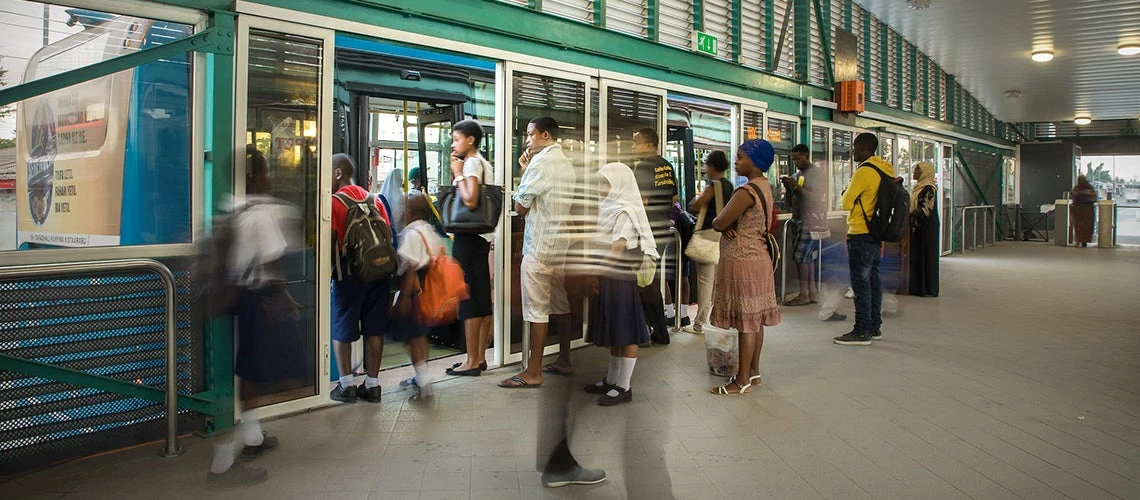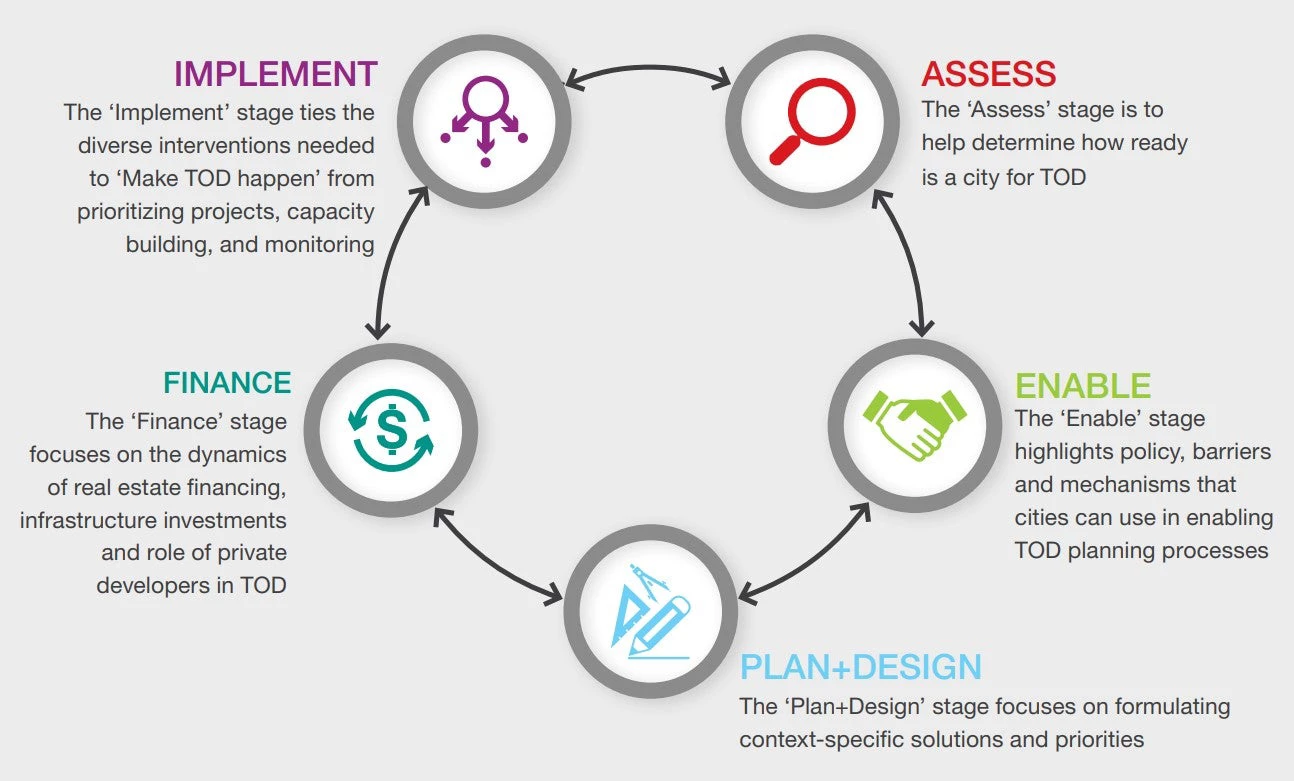 Dar es Salaam’s bus transit system
Dar es Salaam’s bus transit system
This blog is part of “Let's talk about Streets for Life” – a blog series on Transit-Oriented Development and Road Safety.
Imagine a city with safe roads, where people and traffic mix make for streets that are healthy, green, and liveable. A city that can finance improvements to public space and connectivity by capturing value created through integrated land use and transport planning. Such a vision has never been more relevant for a rapid development of urban areas than it is today.
Fortunately, Transit-Oriented Development (TOD) can play a major role in achieving this vision. TOD is a planning and design strategy that focuses on creating urban development patterns which facilitate the use of public transit , walking and cycling, as primary modes of transport and which supports vibrant, diverse, and livable communities. This is achieved by concentrating urban densities, communities, and activities within a 5-10 minute walking distance from mass rapid transit stations (both bus and rail-based), developing quality urban space and providing convenient and efficient access to a diverse mix of land uses.
The TOD Basics
An efficiently planned TOD ensures seamless integration of public transport with different modes of transportation that are accessible, safe, less cumbersome, and comfortable; with the highest priority being given to pedestrians followed by people on cycles, and the least to private vehicles. Following that priority order, a TOD project integrates best practices of land use planning, transportation planning and urban design and is supported by innovative financing models of public private partnerships and infrastructure development to create livable communities.
TOD can be designed at multiple scales of site, station area, corridor, and city or regional levels and help limit the spread of urban sprawl. It increases access to jobs and services, and reduced demand on private vehicles help decrease congestion and improve air quality.
TOD & Road Safety – the missing link
Owing to these benefits amongst many others, cities around the world – especially in low- and middle-income countries are adopting TOD planning practices for smart growth and improving quality of life for their residents.
However, an enhanced integration of walking and cycling networks with public transit means higher number of pedestrians and bicyclists accessing the transit station and the developments within that area.
"Road safety considerations are critical within a TOD project and need to be included at every stage of the process."
If we review the main resources and research on TOD planning made by cities, countries, and various organizations, we will find that road safety is often not included as a high priority consideration by local governments, planners, engineers, developers, and other stakeholders.
What can we do?
The World Bank developed the five-step TOD framework under the Global Partnership for Sustainable Cities. This resource focuses on providing stakeholders with a robust, cyclic process for decision making to implement TODs at multiple scales, adapted to local contexts and constraints.
These five steps have been adapted, using the Safe Systems approach, to include road safety considerations within the framework. The Safe Systems approach is more ‘forgiving’ than the traditional approach for preventing collisions. It considers human beings as vulnerable and fallible, and prone to errors. The Safe Systems approach calls for a shared responsibility between all those accountable for the safety of the system, including all road users.
The five steps now include:
- Assess: To evaluate the road safety status of a city by evaluating the existing conditions, focusing on demographics and road crash data assessment; infrastructure conditions and spatial assessment; and policies, regulatory frameworks, and capacity assessments.
- Enable: To develop an enabling environment that facilitates institutions and stakeholders to be aware of road safety challenges and allows a TOD project to fill gaps identified in the previous step and act as a catalyst for achieving road safety
- Plan & Design: To plan and design infrastructure that addresses networking challenges within a TOD station area and the elements designed are equitable and equipped to cater to the increased volume of users and their requirements.
- Finance: To develop innovative financing tools for the local authorities, enabling institution, developers and property owners that help allocate funds and provide incentives for ensuring road safety.
- Implement: To overcome barriers for implementing road safety within a TOD station area by addressing various gaps as identified and evaluate the effectiveness through key road safety performance indicators.
Key resources to drive action
The updated TOD Toolkit, developed with the support of the World Bank’s Global Road Safety Facility (GRSF), incorporates these recent updates related to road safety, and is also available in sections.
The webinar series “Integration of Road Safety Considerations in TOD Projects” described how to systematically integrate road safety in planning, designing, implementing, and financing of TOD programs.






Join the Conversation